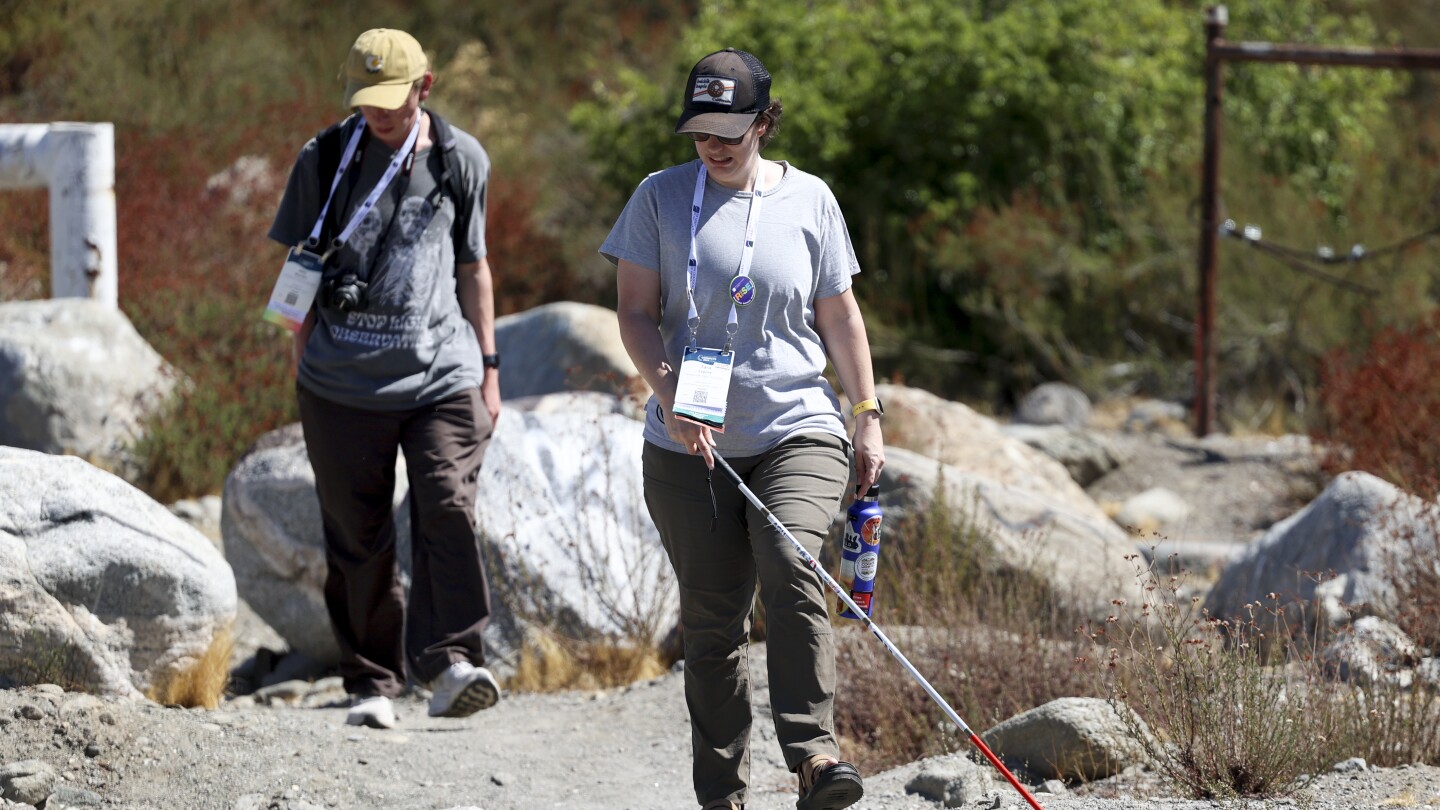Science
How scientists with disabilities are making research labs and fieldwork more accessible

Breaking Down Barriers in Geoscience: Creating Inclusive Fieldwork Opportunities
In the rugged terrain of Lost Lake, California, a group of scientists and students embarked on a unique field trip designed to highlight the challenges faced by disabled researchers and the innovative ways to overcome them. The journey to the lake, located along the San Andreas Fault, was no easy feat. The path was steep, uneven, and littered with sharp rocks and holes, making it inaccessible to many. However, the organizers ensured that no one was left behind. For those unable to make the trek, a drone captured stunning footage of the narrow, blue lake, bringing the experience to life for everyone. This trip, organized by the International Association for Geoscience Diversity, was more than just a scientific excursion—it was a demonstration of inclusivity and adaptability in action.
The Importance of Empathy and Inclusivity in Science
Anita Marshall, a geologist at the University of Florida and the leader of the outing, emphasized that the trip was not just about science but also about empathy. “Just because you can’t do it like someone else doesn’t mean you can’t do it,” she said, reflecting the spirit of the event. The group included scientists with a range of disabilities, from visual and hearing impairments to mobility challenges. Marshall’s organization, the International Association for Geoscience Diversity, is at the forefront of efforts to make field and lab work more accessible, ensuring that disabled researchers feel welcome and valued. By fostering an environment of understanding and support, the group aims to retain diverse talent in the geosciences.
Taormina Lepore, a paleontologist at Western Michigan University who participated in the trip, pointed out that the scientific community often prioritizes a single, traditional approach to fieldwork. This mindset can exclude those with disabilities, who may need to approach tasks differently. However, Lepore, who also studies science education, believes that inclusivity is not just about physical accessibility but also about creating a culture of empathy. At Lost Lake, every participant, regardless of their abilities, was able to engage with the environment—whether by physically exploring the site or through drone footage and rock samples brought back by others.
Making Research Labs More Accessible
The underrepresentation of disabled individuals in STEM fields is a systemic issue, with data from the National Science Foundation showing that only about 3% of the science, technology, engineering, and math workforce identifies as disabled. Many scientists with disabilities attribute this disparity to the lack of accessible labs, classrooms, and field sites. Mark Leddy, who previously managed disability-related grants for the National Science Foundation, noted that students and faculty with disabilities are often told they cannot safely participate in lab work or research. This exclusion is a loss for the scientific community, as researchers with disabilities bring unique problem-solving skills honed through navigating barriers in their daily lives.
Despite the Americans with Disabilities Act (ADA), which mandates accessibility in new buildings, many older labs remain difficult to modify. Alyssa Paparella, a doctoral student in biology at Baylor College of Medicine and founder of an online community for disabled scientists, recalled a science building at one of her former schools that lacked automatic door openers—a basic accessibility feature. “What is that saying about who you want working in the laboratories?” she asked. To address such challenges, universities and organizations are increasingly seeking creative solutions. At the University of Texas at Arlington, Venu Varanasi, a biomaterials engineer with low vision, uses high-contrast signage and encourages clutter-free workspaces to enhance accessibility. These modifications not only benefit him but also improve safety for all students.
The Role of Technology in Expanding Accessibility
The field trip to Lost Lake showcased the power of technology in breaking down barriers. A drone equipped with a camera allowed participants who couldn’t physically reach the lake to explore its features. Jennifer Piatek, a planetary geologist at Central Connecticut State University who uses a wheelchair, relied on drone footage to examine the lake and used a pocket lens to study rock samples collected by others. She appreciated the thoughtful accommodations, such as the bus being parked on a flatter surface to ease her exit. “You can learn a lot from images and maps,” she said, “but really, you need to get to the space to be in it.” For Piatek and others, the trip demonstrated how technology and creativity can bridge gaps between ability and access.
Building a Supportive Community in Geoscience
The trip was not just about overcoming physical challenges but also about fostering a sense of belonging. Bushra Hussaini, who works at the American Museum of Natural History, said the supportive community of geologists is what keeps her engaged. “We learn from each other and we help each other,” she said. This spirit of collaboration is at the heart of the International Association for Geoscience Diversity’s efforts. By organizing annual field trips, the group aims to inspire the next generation of scientists. Anita Marshall, who once felt excluded from fieldwork as a doctoral student, wants things to be different for today’s researchers. “The whole point of these little day trips is to just plant that seed out there,” she said, “that there’s another way forward.”
As the scientific community continues to evolve, inclusivity must remain a priority. By embracing empathy, leveraging technology, and creating accessible environments, researchers can ensure that no talent is left behind. The journey to Lost Lake was a small but significant step toward a future where geoscience is truly open to all.











